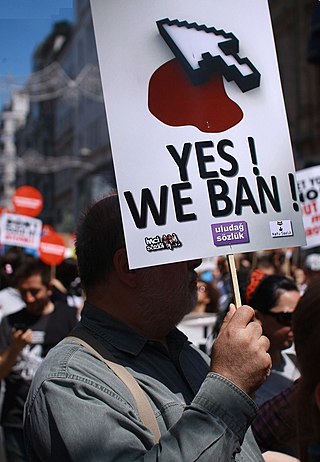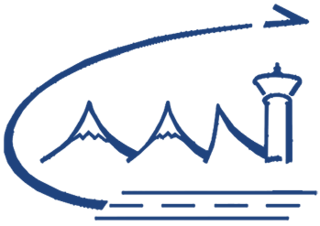Related Research Articles

Freedom of the press or freedom of the media is the fundamental principle that communication and expression through various media, including printed and electronic media, especially published materials, should be considered a right to be exercised freely. Such freedom implies the absence of interference from an overreaching state; its preservation may be sought through constitution or other legal protection and security. It is in opposition to paid press, where communities, police organizations, and governments are paid for their copyrights.
The New World Information and Communication Order is a term coined in a debate over media representations of the developing world in UNESCO in the late 1970s early 1980s. The NWICO movement was part of a broader effort to formally tackle global economic inequality that was viewed as a legacy of imperialism upon the global south. The term was widely used by the MacBride Commission, a UNESCO panel chaired by Nobel Peace Prize laureate Seán MacBride, which was charged with creation of a set of recommendations to make global media representation more equitable. The MacBride Commission produced a report titled "Many Voices, One World", which outlined the main philosophical points of the New World Information Communication Order.
The mass media in Georgia refers to mass media outlets based in the Republic of Georgia. Television, magazines, and newspapers are all operated by both state-owned and for-profit corporations which depend on advertising, subscription, and other sales-related revenues. The Constitution of Georgia guarantees freedom of speech. Georgia is the only country in its immediate neighborhood where the press is not deemed unfree. As a country in transition, the Georgian media system is under transformation.
The mass media in Singapore refers to mass communication methods through broadcasting, publishing, and the Internet available in the city-state. Singapore's media environment is dominated by two major players, Mediacorp and SPH Media Trust.
Censorship in Cuba is the topic of accusations put forward by several foreign groups-organizations and political leaders. The accusations led the European Union to impose sanctions from 2003 to 2008 as well as statements of protest from groups, governments, and noted individuals.
Censorship in Myanmar results from government policies in controlling and regulating certain information, particularly on religious, ethnic, political, and moral grounds.

Censorship in Turkey is regulated by domestic and international legislation, the latter taking precedence over domestic law, according to Article 90 of the Constitution of Turkey.

Mass media in Somalia includes various radio, television, print and internet outlets. The federal government operates two official radio and TV networks, which exist alongside a number of private and foreign stations. Print media in the country is progressively giving way to news radio stations and online portals, as internet connectivity and access increases. In February 2013, the Ministry of Information, Posts and Telecommunication also launched a broad-based consultative process for the reformation of media legislation.
The mass media in Slovenia refers to mass media outlets based in Slovenia. Television, magazines, and newspapers are all operated by both state-owned and for-profit corporations which depend on advertising, subscription, and other sales-related revenues. The Constitution of Slovenia guarantees freedom of speech and Slovenia ranked 40th in the 2016 Press Freedom Index report compiled by Reporters Without Borders, falling by 5 places if compared to the 2015 Index.

The mass media in Mongolia refers to the print, broadcast and online media in Mongolia. Since the collapse of the Soviet style system in 1990, the media has undergone large reforms which have allowed greater diversity and freedom of the press which make it one of the most free in the region. Censorship of media outlets is forbidden under the 1998 Media Freedom Law. In its 2013 report, Reporters Without Borders classified the media environment as 98th out of 179, with 1st being most free.

The Civil Aviation Authority of Nepal is an independent civil aviation regulator. It was established as a Nepali government body in 1998 and is headquartered in Kathmandu.

The Ministry of Energy, Water Resources and Irrigation is a governmental body of Nepal that governs the development and implementation of energy including its conservation, regulation and utilization. It furthermore develops operates electricity projects including hydropower projects. Due to the importance of water resources in Nepal, the ministry focuses on the development and utilization of hydropower. In 2018, under the second Oli cabinet, the portfolio of the ministry was enlarged and the portfolios of Water Resources and Irrigation was added to the then Ministry of Energy, while the Ministry of Irrigation was discontinued.

The Ministry of Agriculture and Livestock Development is a governmental body of Nepal responsible for the growth and development of agriculture sector in the country. Local areas each have a District Agriculture Development Office (DADO). The Ministry of Agriculture and Livestock Development is the central apex body of Government of Nepal to look after the agriculture and allied fields.

The Ministry of Communication and Information Technology(Nepali: सूचना तथा सञ्चार प्रविधि मन्त्रालय) is governmental body of Nepal that manages postal services, telecommunications, broadcasting, press and information and film development in the country.
The Ministry of Forests and Environment is a governmental body of Nepal responsible for the conservation of forests and managing the environment in the country. Its main purposes are to enhance sustainable growth of the forest and water sectors and to manage the biodiversity, flora and fauna and also to increase the development of forest related enterprises in order to combat poverty throughout the rural areas of Nepal.

Leela Mani Poudyal is Chief Secretary of the Government of Nepal between 2012 and 2015. Poudyal is a popular leader with his strict civil service motto, and his social campaigns like anti-graft movement and "Clean Bagmati Campaign" that he started entirely through his own initiative. He remains to be a popular figure in Nepalese socio-political scenario, actively taking part in discussions, talk-shows and social movements.
Most Azerbaijanis receive their information from mainstream television, which is unswervingly pro-government and under strict government control. According to a 2012 report of the NGO "Institute for Reporters’ Freedom and Safety (IRFS)" Azerbaijani citizens are unable to access objective and reliable news on human rights issues relevant to Azerbaijan and the population is under-informed about matters of public interest.
Laos has one of the most restrictive media environments in the world. In 2020, Reporters Without Borders ranked Laos 172 out of 179 on its annual Press Freedom Index, behind countries such as Cuba and Iran.
Censorship in Nepal consists of suppression on the expression of political opinion, religious aspect, and obscenity. The Constitution of Nepal guarantees the fundamental rights of citizens, including the freedom of expression. The right to freedom of expression includes the freedom of opinion and thought no matter what a source is. As the Constitution has been developed to push forward as a democracy state, inconsistencies of the Constitution reform create different meanings of prohibiting censorship. The 2004, 2009, and 2015 Constitution are infamous with the restrictions of the rights which are obscure and open for misinterpretation compared to the Constitution announced in 1990.

The Second Oli cabinet was the Government of Nepal from 15 February 2018 to 13 July 2021. It was initially formed as a majority coalition on 15 February 2018, after Khadga Prasad Sharma Oli was elected as the new Prime Minister of Nepal following the 2017 general election. Oli's candidacy was supported by the Communist Party of Nepal and the Communist Party of Nepal. He assumed his office along with two ministers with the remaining ministers added at later points. The CPN withdrew its support from the government in May 2021, reducing it to a minority, and after the dissolution of the House of Representatives, it turned into an interim government. The second Oli cabinet was replaced by the fifth Deuba cabinet, formed after the Supreme Court ordered the appointment of Nepali Congress president Sher Bahadur Deuba as prime minister under in accordance with Article 76 (5) of the Constitution of Nepal.
References
- 1 2 "Press Council Nepal". Press Council Nepal. Retrieved 14 November 2017.
- ↑ "Introduction" . Retrieved 2017-02-10.
- ↑ "Press Council Nepal classifies 833 newspapers, magazines" . Retrieved 2017-02-10.
- ↑ "Organizations under Ministry". Ministry of Information and Communications. Retrieved 26 October 2017.
- ↑ Republica. "FNJ warns Press Council Nepal of disobedience if the latter does not correct its decision". My Republica. Retrieved 2023-01-22.